Day Eleven – A Jam-Packed Day in Jerusalem
By: Morgan Miller '24
This article is part of a series of reflections prepared by students enrolled in the Texas A&M School of Law 2023 Global Field Studies Program: Israel. Click here to visit the entire series.
Our first full day in Jerusalem was packed full of information and experiences. We started the day by meeting our tour guide, Jared Goldfarb, at our last hostel called The Post in the center of the city. He explained about the conservative dress code for the sacred areas of the Old City and ensured that both the men and women knew they needed to cover their arms and legs, and women should further cover their chests.
Jared then took us into the Old City, but before we entered the gates, he took a moment to give us some history of Jerusalem. We arrived in Jerusalem the week many citizens celebrated Flag Day or Jerusalem Day; a day where 56 years ago, by many Jewish people’s standards, Jerusalem went “from divided to united” when East Jerusalem was reunified with West Jerusalem following the Six-Day War of 1967.
A representation of the decoration throughout the city in honor of Jerusalem Day.
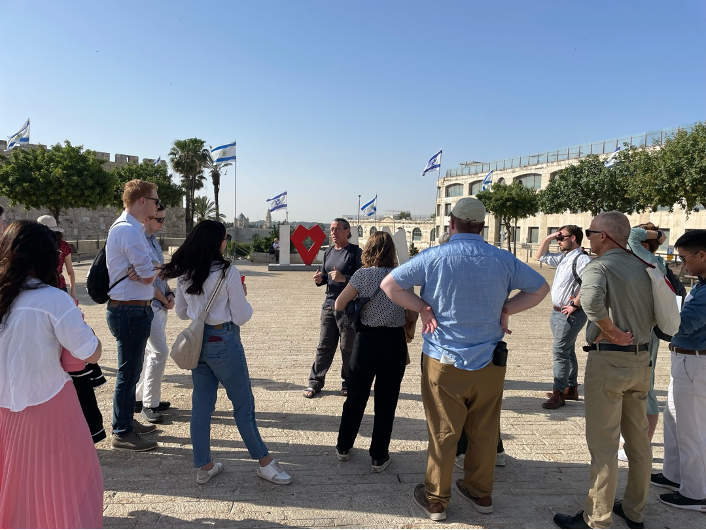 Listening to our tour guide, Jared Goldfarb, giving his introduction to the Old City
Listening to our tour guide, Jared Goldfarb, giving his introduction to the Old City
Jared shared with us the significance of the Old City, not just for practicing Jews like himself, but for many people practicing other monotheistic religions. He referred to it as an “emanation of different identities in one shared sacred space.” And he reminded us that the sacred space was significant not just for one moment but in “embracing the overall narrative.”
This was the language we heard throughout our trip to emphasize the multiple realities happening in Israel at any given moment based on where you get your information, what your background is, where you live, and what religion you practice (i.e., what narrative you hear is the one you believe). Inside the Old City, people practicing Judaism, Christianity, and Islam all embrace their version of what happened there, which holds significant meaning for them. Jared told us that inside the walls of the Old City, we’d be “going back in time to different cultural and ethnic realities.”
The major points he noted within the walls of the Old City were (1) the Western Wall, a wall that supports the Temple Mount and is a symbolic place of prayer for Jewish people as the last remnant of the second Jewish temple, (2) the Al-Aqsa Mosque, a place of worship for Muslims in a space significant to the Prophet Muhammad's journey, (3) the Dome of the Rock, a place of religious significance for various monotheistic religions but currently used by practicing Muslims, and (4) the Church of the Holy Sepulchre, significant as the place of crucifixion, burial, and resurrection of Jesus Christ for various Christian denominations.
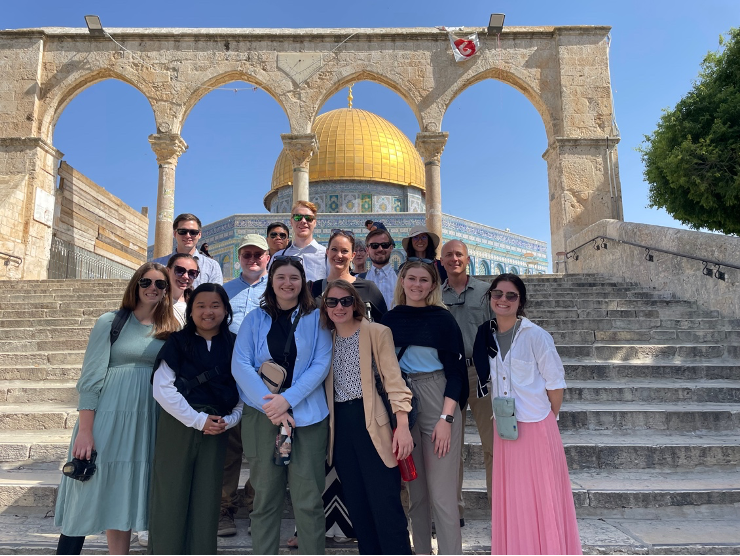 Our group in front of the Dome of the Rock inside the Old City
Our group in front of the Dome of the Rock inside the Old City
The Dome of the Rock can only be entered by Muslims from Jerusalem. Conflict has arisen between some Muslim and Jewish communities over the Noble Sanctuary area (also known as al-Haram al-Sharif), the entire area above the Western Wall, which includes the Dome of the Rock and the Al-Aqsa Mosque. This is where some ultra-Orthodox Jews hope one day to erect their “Third Temple.”
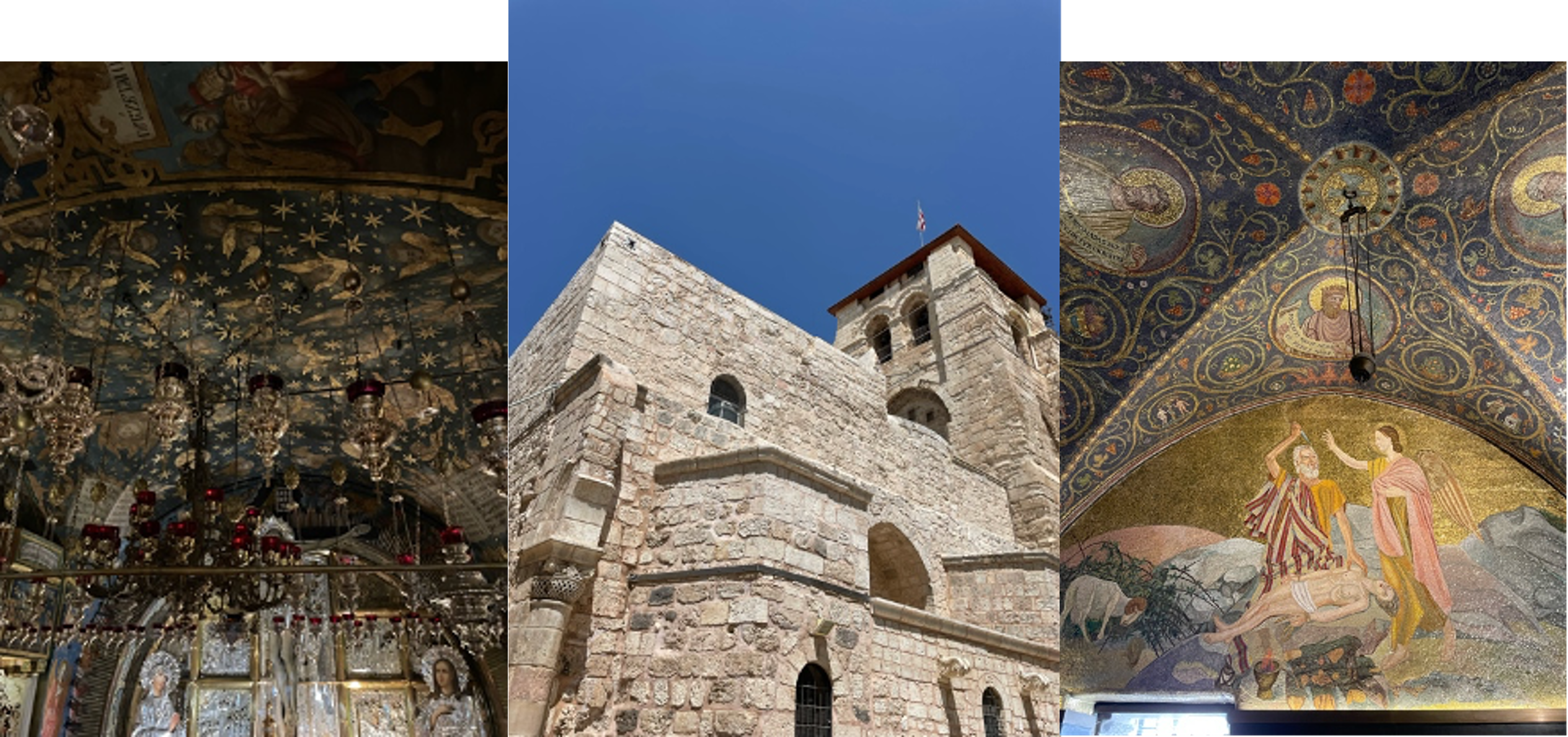 It is said by some Christian denominations, like Greek Orthodox and Roman Catholics, to be the site where Jesus was crucified and buried
It is said by some Christian denominations, like Greek Orthodox and Roman Catholics, to be the site where Jesus was crucified and buried
After departing from the Old City, we traveled to the Israel Supreme Court where we learned about Israel’s judiciary. The Supreme Court is the highest court in Israel and has 15 justices. The Court does not create precedent the way courts do in the United States. Just because the Israeli Court decides a specific case one way, does not mean another case will follow that decision.
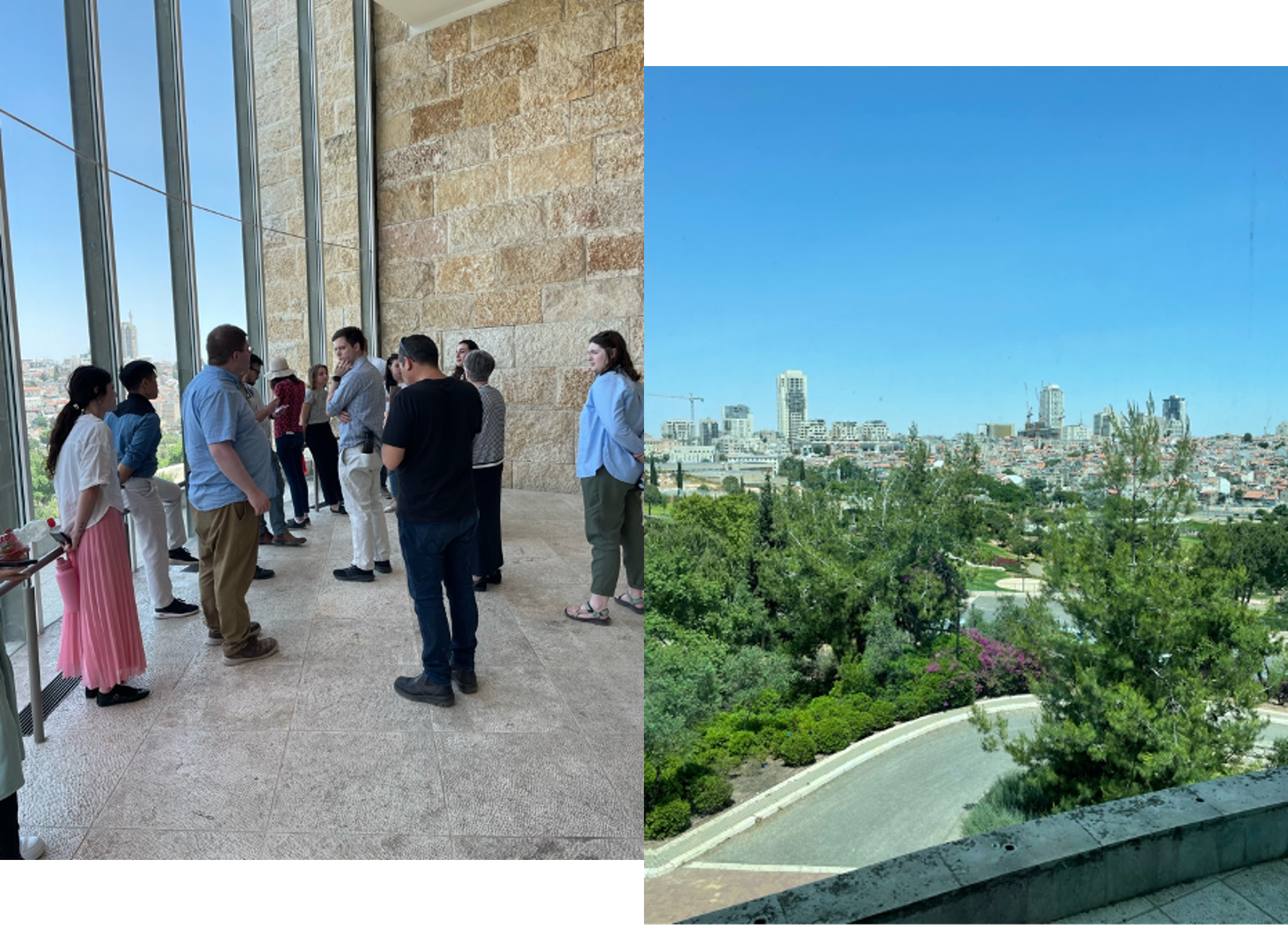 Our group in the Supreme Court building looking at the view of the city
Our group in the Supreme Court building looking at the view of the city
The building’s design has a number of significant architectural points. The large windows looking toward the city are intended to signify transparency and openness between the judiciary and the public in Israel. The use of rectangular and circular shapes throughout the building stood for truth and justice. Truth is said to be like a straight line because it either is or it isn’t. But justice is said to be a circle because it considers the what with the why and recognizes that justice is not so easily determined.
After the Supreme Court, we ended our tour at a local Ethiopian restaurant called Habesh. Ethiopian culture is significant in Israel because of the many Ethiopian Jews who fled to Israel between 1977 and 1984 due to war and mistreatment in Ethiopia.
 The sponge-like bread is gluten-free and this is a meal intended to be eaten entirely by hand. You break off the bread and use it to scoop up whatever mix of lentils, meat, and veggies you desire.
The sponge-like bread is gluten-free and this is a meal intended to be eaten entirely by hand. You break off the bread and use it to scoop up whatever mix of lentils, meat, and veggies you desire.
Following dinner, we had the opportunity to explore Jerusalem’s nightlife and marketplace to round out an information-packed day.
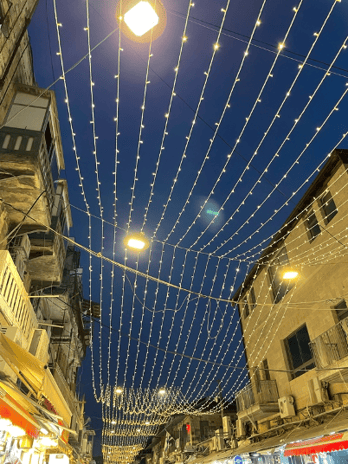

Learn more about Texas A&M University School of Law's Global Law and Policy Program, Aggie Dispute Resolution Program, and Energy, Environmental, and Natural Resource Systems Law Program
